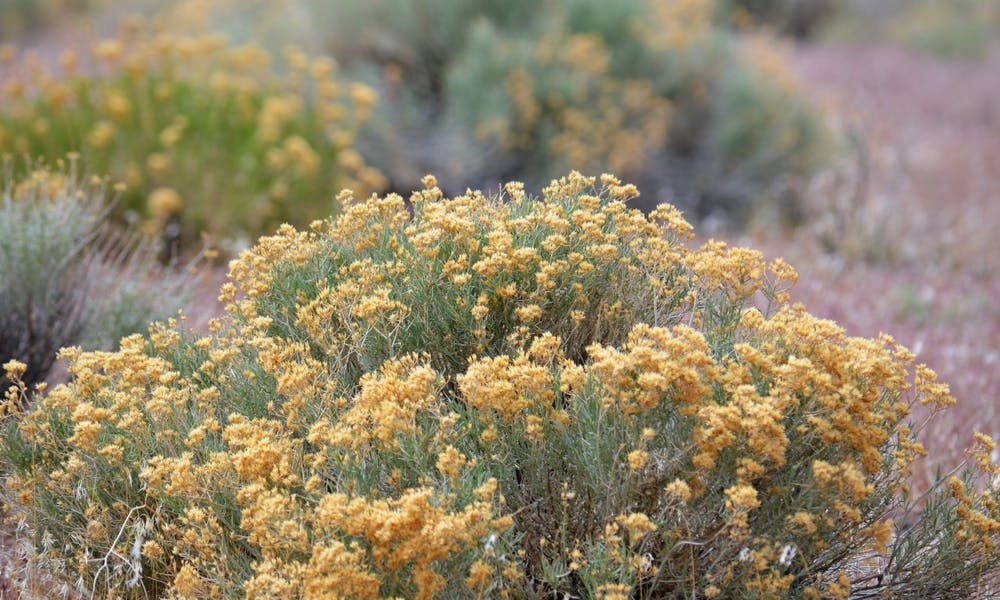MENU
The Sagebrush: Nevada State Flower

Nevada is a beautiful state located on the western side of the United States, bordered to the southwest by California, to the north by Oregon and Idaho, and to the east by Utah and Arizona. Its name comes from the Sierra Nevada mountain range, which has strangely the same name as a mountain range located in Spain. In Spanish, Nevada means “snowy” or “covered with snow.”
Nevada is a place full of history and an amazing work of art of Mother Nature. It is a wonderful state where you can have an amazing time with your beloved ones. You can enjoy the beautiful nature of a romantic walk or take a visit to a park with your family. As a souvenir from Nevada, you can take sagebrush seeds to plant and put them in your garden, because they are the official flower of this state.
In this article, we are going to talk about the following points:
* What are the best places to visit in Nevada?
* What is the best food in Nevada?
* What you should know about the sagebrush
* Planting sagebrush
* Maintaining of the sagebrush
What are the Best Places to Visit in Nevada?
For trip lovers, Nevada is full of wonderful places that you definitely should visit. For a romantic weekend or a trip with or for your family, you cannot be bored in this state! Parks and nature reserves were created for the leisure of city inhabitants and tourists, but also to protect the environment. The Grand Basin National Park, created in 1986, is the most famous one, but there are many others.
Moreover, Nevada is a place full of culture, history, and monuments. One of the most famous is the Nevada State Railroad Museum, Virginia and Truckee Railroad, the National Automobile Museum, and the Nevada Museum of Art.
In many of these areas, you can see the state emblem, the sagebrush flower. This flower was adopted by the state as the state flower in 1917. It is a beautiful flower full of uses and with a very relaxing scent.
What is the Best Food in Nevada?
Nevada does not have any official dish, but the “All you can eat Buffets” of Las Vegas hotels are well known, and each hotel has its specialties and themes.
Apart from Las Vegas, where you can eat all the cuisines of the world, in the rest of Nevada, you eat more typically American cuisine where bacon, eggs, burgers, and beef are predominant. In the north of the state, there is a great influence of Basque cuisine.
One of Nevada’s specialties is Chateaubriand, a thick piece of beef cut into a tenderloin, usually served with puffed apples. In northern Nevada, Chateaubriand is often prepared between two finer pieces of meat. In Nevada cuisine, there is widespread use of chili and beans, too; it is then very common to find Chili con carne, but also fajitas and stuffed peppers with cheese or meat.
What You Should Know About the Sagebrush
Nevada designated sagebrush, or by its other names Artemisia tridentata or trifida, as the official state flower in 1917. Because of this symbolism, Nevada can also be called the Sagebrush State. Sagebrush is a plant of the Asteraceae family native to the temperate regions of Europe, Asia, and North Africa, and more particularly of the Mediterranean basin. The genus includes around 300 species, annual or perennial, herbaceous or shrubby.
Her Latin name comes from the Greek goddess Artemis, protector of virgins, sick women, and expectant mothers. Known since antiquity for its medicinal properties, it was then widely used in gynecology to calm painful periods and facilitate childbirth.
In the garden, sagebrush gives magnificent foliage, most often aromatic, with multiple aspects: very cut, broad, fine, lobed, rigid or very flexible, sometimes fluffy, tender green to dark green, but silver-gray, almost white, is the most common color.
Planting Sagebrush
Sagebrush does not need very much to grow. It likes the sun, light and well-drained soil, and limestone, but it tolerates slightly acidic soils. It grows naturally without any problem in poor and stony soils, which favor the silver color and a compact habit. It can grow both in pots and in the ground.
A rich soil provokes the excessive lengthening of the stems, but in heavy soil, it lives only for a very short time, except Artemisia pontica, which tolerates clay soil, and Artemisia lactiflora, which grows only in wet ground and with partial shade.
The best time to plant sagebrush is spring, after frost, or fall. It tends to spread out because it needs space when it grows. Make sure to give 0.30 to 1 m between two plants, depending on its adult size and spreadability.
Maintaining of the Sagebrush
During the first summer, make sure to water it regularly if your climate is dry. Do not forget to remove the faded leaves. Optionally suppress flowering to promote foliage. You can also bring a small shovel of compost in the fall. Additionally, during the summer, black aphids can invade the stems. If the attack is massive, it is best to cut the colonized stems. Otherwise, just spray with 10 percent diluted black soap.
A few decades ago, sagebrush was considered being a bad plant or pharmacy herb. English gardeners, seduced by the beauty of their foliage, introduced them into their gardens. This charming plant is the symbol of Nevada. If you plant it, it can magnify your garden and give it a very original touch, or remind you of your beautiful trip to the Sagebrush state. Moreover, if one of your beloved friends or family is in Nevada, you can offer them some seeds if they like gardening as much as you do, it could be proof of how much you love them and care about them.

